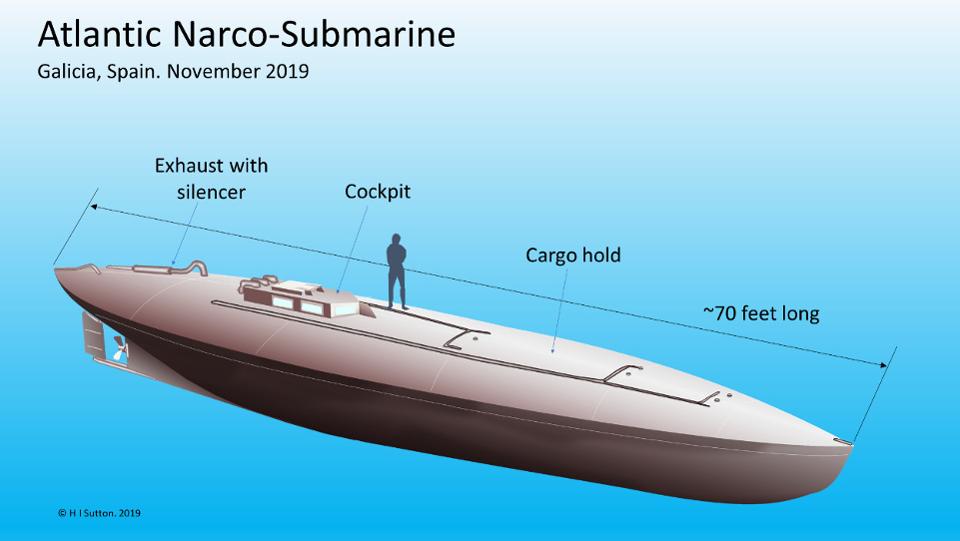
[Forbes.com] – This may be of huge significance for counter-narcotics operations. It is the first example of a Latin-American style narco-submarine in Europe. And it may also be the first instance of a transatlantic narco-submarine.
At dawn on Sunday, Spanish police descended on a picturesque bay just north of Vigo, on Spain’s Atlantic coast. The so-called narco-submarine, used for smuggling cocaine, was being abandoned by its crew. They appear to have scuttled it to hide the evidence. Two were arrested and a third suspect was reported to be on the run.
I have analysed over 160 reported narco-submarine incidents since 1993 and this one is extraordinary. Virtually all previous occurrences have been between Colombia and Mexico, and mostly in the Pacific. Narco-submarines typically travel a couple of thousand miles. But a transatlantic voyage in such a small craft is hard to contemplate.
The craft is estimated to be 72 feet long. This make is approximately twice the size of the typical drug submarines found operating between Colombia and Mexico. Like most others, it is technically a low profile vessel (LPV) instead of a true submarine. This means that it runs very low in the water to avoid detection, but cannot fully submerge.
Initial reports suggest that the submarine has been operating between Guyana, in South America, and Spain. It reportedly stopped off in Portugal en-route, which is where law enforcement picked up its trail.
This is broadly consistent with expectations, with likely drug routes between South America and Cape Verde off the coast of Africa, then up to Spain. We know that drugs are trafficked via this route, but by cargo ships and yachts. Narco-submarines have long been suspected, however. In 2014 a large narco-submarine was discovered in Guyana, lending credence to this notion.
Suspicions of transatlantic vessels have been around since 2007 when an extraordinarily large narco-sub was discovered in the Guajira Desert on Colombia’s Caribbean coast.
In 2010 a convicted drug smuggler was reported to have been building a $20 million submarine in Africa. It was intended to sail across to Latin America where it would pick up a cargo of cocaine. It would return to the Canary Islands, from there the drugs would be sent to Europe.
Then in December 2015, a narco-submarine was discovered in the jungle on Brazil’s Atlantic coast. That made no sense unless the crew had been preparing for a transatlantic trip. So there have been several precursors, but this discovery in Spain is the most solid evidence yet of this happening.
It’s not the first time Spanish coast around Vigo has been at the center of narco-submarine news, however. In August 2006 a small steel submarine was discovered abandoned on a beach.
It was suspected of being intended for drug smuggling. But it was built locally, so likely for ferrying drugs from larger ships offshore. That vessel was newsworthy at the time but ranks as a curiosity rather than a trend.
This latest discovery changes our understanding of international drug smuggling.







